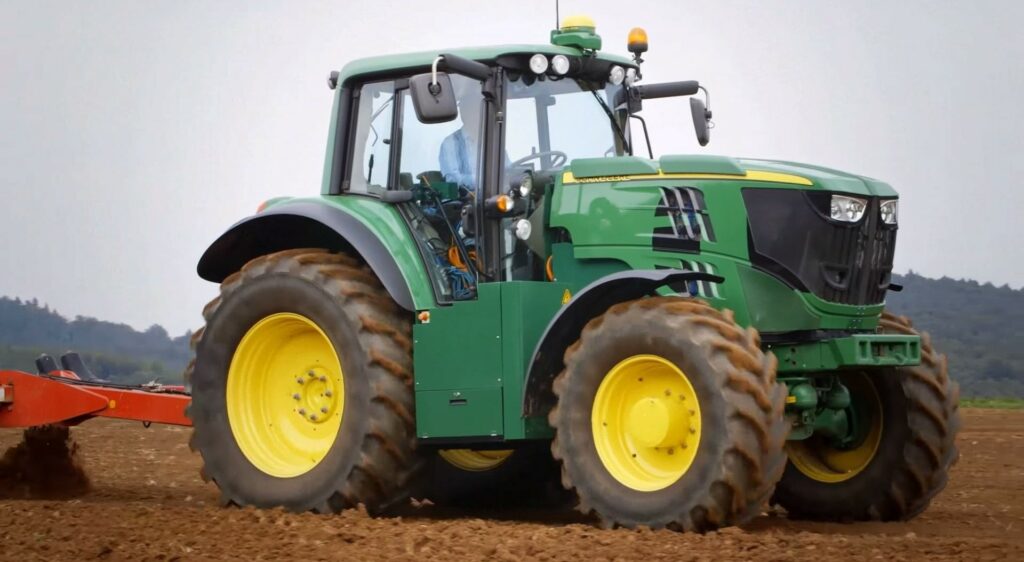viernes, 15 de agosto de 2025
martes, 15 de julio de 2025
sábado, 21 de junio de 2025
sábado, 22 de julio de 2023
Retroexcavadora China 100% electrica - Shantui SD17E. Electric driven. No exhaust
- Shantui goes electric.
- Here you can see the SD17E bulldozer at work.
- No exhaust. Heavy load working time 4-5 hours,
- Standard load 6-8 hours.
- Cab noise 76 db.
martes, 8 de diciembre de 2020
viernes, 18 de septiembre de 2020
CEM-MI-Saudi 2020: 10 years of EVI: Entering the decade of the electric drive
miércoles, 16 de septiembre de 2020
La retroexcavadora eléctrica Breton de NEM Motors ya se fabrica en serie en China
La incursión de la electricidad en la maquinaria pesada poco a poco se va viendo materializada de mano de la llegada de nuevos modelos al mercado. La retroexcavadora de NEM Motors Breton ya se fabrica, con una primera tirada de 1.500 unidades dispuestas a salir a la venta.
No nos equivocamos demasiado afirmando que, lo más seguro, es que el futuro de las herramientas de trabajo en campo está encaminado en su totalidad a pasarse a la electricidad. Así lo aprobarían las retroexcavadoras eléctricas Breton que NEM Motors está ya fabricando y que serán vendidas masivamente en breves.
No es la primera herramienta de trabajo eléctrica que pasa por nuestra portada, y a buen seguro tampoco será la última. Hace dos semanas generó mucho interés a su paso por nuestra web el tractor eléctrico de Solectrac, la empresa californiana especializada en la electrificación de tractores ligeros y pesados. Otra retroexcavadora que pasó por nuestra portada fue la CASE 580 eléctrica, algo más capaz que la protagonista de hoy.
Hoy la imagen que ocupa nuestra portada es, sin duda, una muy buena noticia para el sector, ya que la fabricación de las palas eléctricas cargadoras de Breton, supondría la entrada al masivo mercado chino de uno de los distribuidores de maquinaria de construcción más importantes de China, Gangjia.
Según informa el medio chino especializado en coches eléctrico EVHui la primera tirada ya estaría completamente fabricada, con un total de 1.500 unidades de la pala cargadora eléctrica ya listas para afrontar los primeros trabajos a pie de obra.
Las características técnicas que ofrece la retroexcavadora de Breton ofrecen unas prestaciones acordes, cuanto menos, a los trabajos a realizar. Lo más llamativo, sin duda, y lo que sin duda llamará también más la atención a sus posibles clientes es que por cada carga rápida necesitará tan sólo una hora, lo que se plantea como un tiempo correcto para, por ejemplo, recargar la retroexcavadora durante la pausa de mitad de jornada. A cambio de esa hora de carga, los trabajadores gozarán de cinco horas de uso intensivo de la herramienta.
El paquete de baterías que equipa la retroexcavadora eléctrica de Breton es una incógnita, pero sí han desvelado datos de potencia y capacidad de carga. Contará con un motor eléctrico que trabajará a bajas revoluciones, 200 revoluciones por minuto exactamente (no necesita de más), y una potencia de 160 kW que se complementado por un descomunal par motor de 2000 Nm. Gracias a ello es capaz de portar cargas de hasta 5.000 kilos.
Anuncia la firma que el coste que supone en un día de trabajo el uso de esta retroexcavadora eléctrica conforme a una términa tradicional se reduce en unos 1.200 yuanes al día (unos 150 euros al cambio actual), lo que supondría un ahorro del 70% diario.
Es poca, por no decir nula, la información dispuesta de la retroexcavadora eléctrica de Breton en todo internet, por lo que de encontrar más detalles de esta herramienta de trabajo eléctrica en las próximas semanas, ampliaremos información en otro artículo.
viernes, 17 de julio de 2020
The Rise of Electric Vehicles 2020 Is Gaining Momentum Worldwide
QUICK VIDEO SUMMARY:
2. Electric Passenger Ship
3. Volkswagen On Electric Vehicles
4. Eco-Friendly Two-Wheeled Vehicle
5. Ford’s New Electric Mustang
6. Driverless Electric Tractor
7. Mazda's First Electric Car
8. Electric Cargo Ship
jueves, 9 de abril de 2020
lunes, 16 de marzo de 2020
RetroExcavadora Electrica; CASE Introduces the Industry's First Fully Electric Backhoe Loader
martes, 3 de septiembre de 2019
JCB Electric Excavator | Fully Charged
domingo, 27 de enero de 2019
China's first driverless electric tractor starts working
sábado, 15 de diciembre de 2018
lunes, 29 de octubre de 2018
viernes, 19 de mayo de 2017
Renewable Energy Is Unstoppable, Declares Financial Times
https://cleantechnica.com/2017/05/19/renewable-energy-unstoppable-declares-financial-times/





